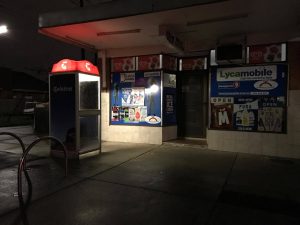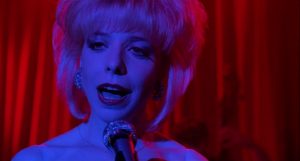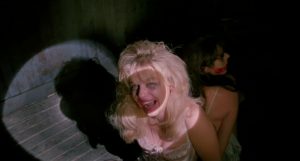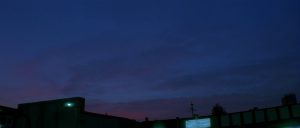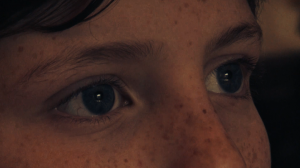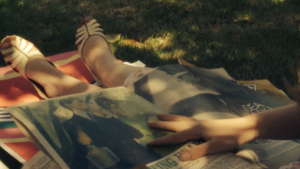true to form, final post
In my first ever Media lecture back in 2015, someone said, “Don’t wait for the light bulb moments to come to you… but if they do, great.” I forget who said this (though I have a strong feeling it was Paul) but it’s been weighing on my mind a lot during the process of creating Mary In The ‘Burbs. I came up with the idea whilst I was driving home from a mediocre day of selling suits. Stopped at a red light, I spotted a telephone booth and thought to myself, “Far out, I didn’t even know they existed anymore.” As if some God above was listening to my thoughts, I was sent a vision of a girl in costume using the booth on a deserted street – only, instead of having a ‘normal’ conversation, we hear something else entirely on the other end.
From the get go, my piece has always aimed to explore the possibilities of an Australian suburb at night time with the addition of something that is odd/out of place to the location. Having this solid contention to refer to made it easy for me to never steer off track because I knew exactly what I wanted to make and how I wanted to make it – I guess you would call that, staying true to form. I wasn’t always able to do this. In past studios I was often shy about my ideas and changed them a million times to compromise with the people in my group. Funny that word: compromise. Art should never be compromised.
I owe James Thompson a great deal for making me realise that every film needs one simple aim – much like David Lynch and his direction in Blue Velvet (1986). He had no idea what his story would be about, except for the fact that a boy finds a severed ear in a field. Pure magic because it’s so simple. I admire directors like Ana Lily Amirpour because she thinks of a bunch of things that she likes and throws them into a film, forcing them to work with each other – and that’s precisely what I did. I like the Virgin Mary and Australian suburbs and neon and sequins and synth-pop (all of which I wrote down in our writing session) so I put them together in a script that I wrote in one evening and made them all work. People I speak to about this project have asked:
“What is this about?”
“What is the relationship between Mary and the guy in the wig?”
“Why is she carrying a suitcase?”
“Who picks her up at the end?”
I reply with, “I don’t know” – because I bloody well don’t. I didn’t set out to make something coherent with answers. It is what it is. I refuse to believe that a lot of creatives sit down and think of the hidden meanings in their work as they make it. Sure, I can manufacture my own version of what I think Mary In The ‘Burbs means, and others are free to think what they will too.
Collaboration —
This is the most involved I’ve ever been in a project, mentally speaking. The few weeks leading up to it and the actual shoot weekend was by far the most stressed and excited I’ve felt all year. Organising equipment is HARD. Organising actors is EVEN HARDER. Organising the weather conditions is obviously impossible. But it all worked out. It’s been really good collaborating with Brendan and having someone to share this mini creative journey with. I’m incompetent with a camera and he knows exactly what he’s doing so there is a lot of trust in our relationship, especially since we learnt a huge deal from our failed project last year (we’re never to bring that up again.)
Projects that crash and burn such as that spawn of Satan film, helped shaped Mary into the film that it is. We made a huge point to create something that is simple in terms of story and visuals – something that we could tackle and perfect in the time that we were given. I feel that a lot of student filmmakers ‘fail’ because their projects are too grandiose for the resources or skill-sets that they have. Where Brendan worried about the technicalities, I worried about the aesthetic – scouring Savers for props and hand-sewing hundreds of sequins onto the Sacred Heart of Mary’s dress.
I’m stoked that Brendan brought Harry (the sound guy) on board because we both hate sound to its very core. With a project of our nature, we couldn’t do it justice with only the two of us anyway. It was Brendan’s aim to treat this film as a ‘professional’ set so we thought it best that someone else assume that role. This also enabled us to fully immerse ourselves in the positions of Director and Cinematographer, which is all we wanted to do this semester.




